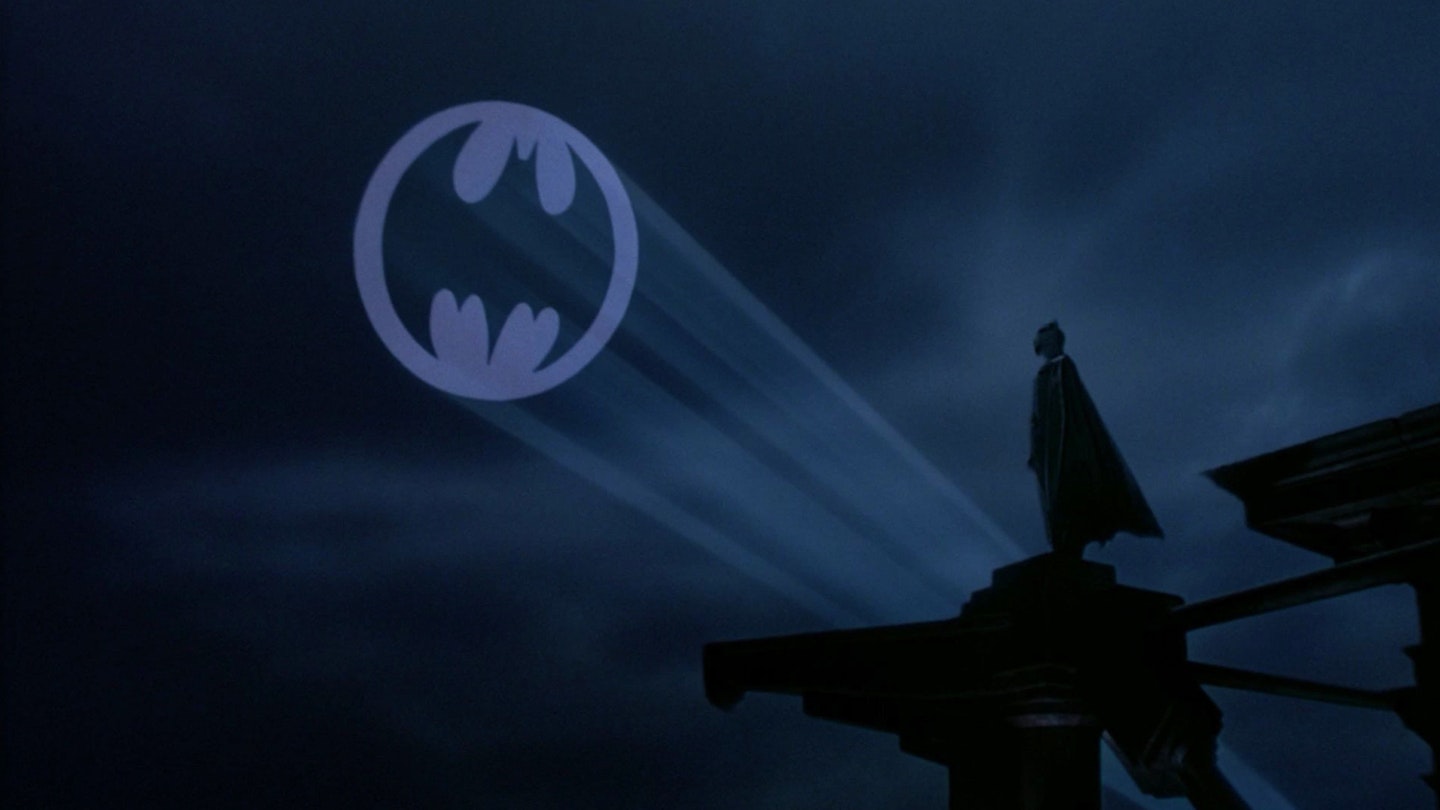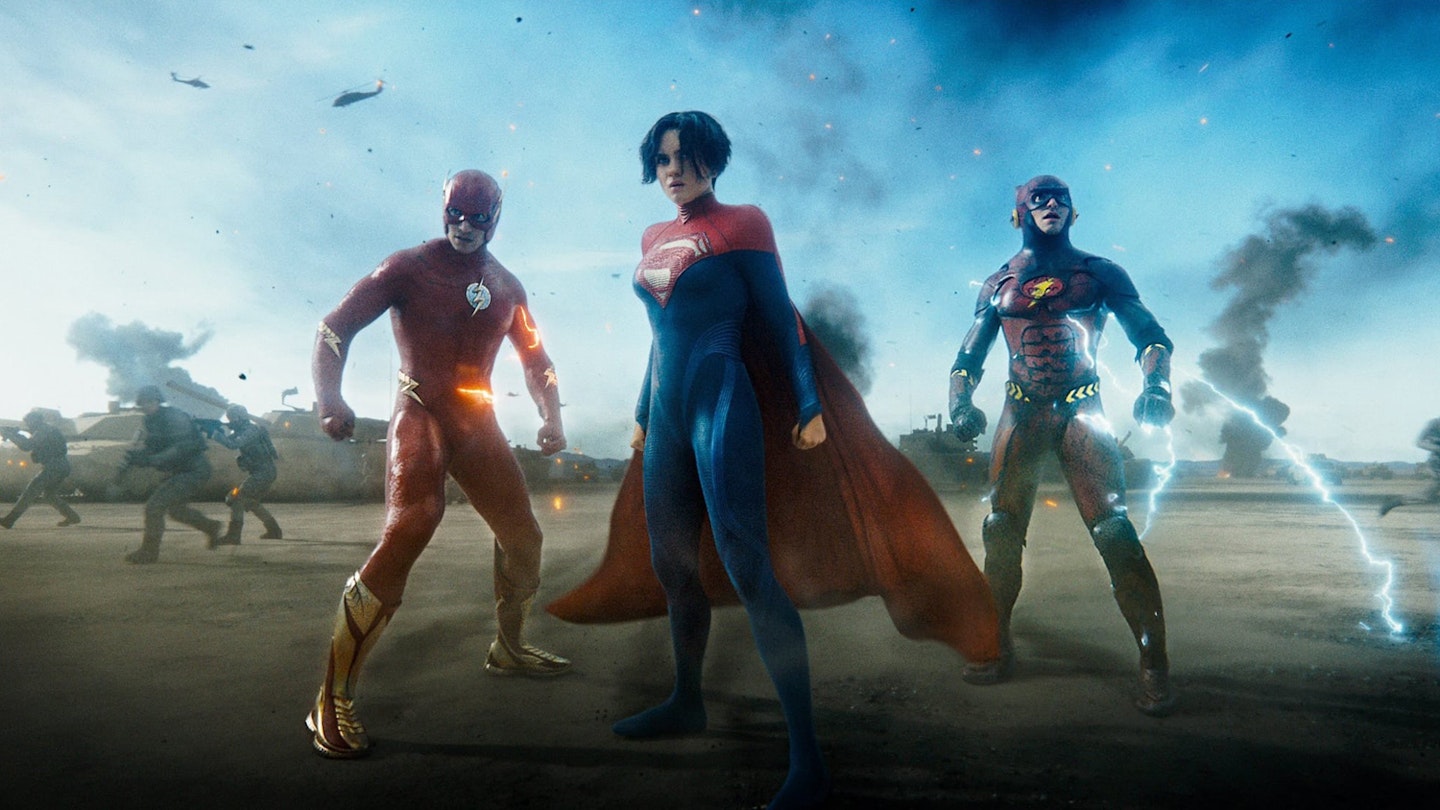Long before the DCEU, before ‘R-Battz’ and the Dark Knight Trilogy, before Bat-nipples and “ice to see you”, there was one Batman to rule them all. Back in 1989, Michael Keaton’s caped crusader soared onto the big screen in Tim Burton’s Batman – part all-out blockbuster, part Burton gothic oddity, part comic book come to life. For long-term Bat-fans, it was a lightning strike. “We hadn’t had a screen Batman in a long time,” says filmmaker Andy Muschietti. “We grew up with Adam West, the re-runs and the movie.” For his sister, Barbara Muschietti, Burton’s Batman was a formative filmgoing experience. “It was my first time going to a movie at [Grauman’s] Chinese Theatre on opening day,” she says. “I’ll never forget it.” It was a milestone in comic book cinema. But in the wake of Burton’s weirder, wilder sequel Batman Returns in 1992, Keaton decided to hang up the cowl for good.

Until now. In The Flash – the long-awaited headline film for super-speedy DC hero Barry Allen (Ezra Miller), directed by Andy Muschietti and produced by Barbara Muschietti – multiversal machinations send the Scarlet Speedster hurtling into an alternate reality. And in that dimension, Bruce Wayne no longer comes in the form of Ben Affleck, but an older, grizzled Michael Keaton. Cue the Batdance. “I never thought that Keaton would come back as Batman, let alone us doing it, and me directing,” says Andy.
If every Batman has had its own flavour – from Robert Pattinson’s emo detective, to Christian Bale’s city slicker, to Ben Affleck’s beefy brawler – Keaton’s Bat was always stoic, formidable, and just a little bit nuts. “His characterisation of Bruce Wayne – and Batman – was mind-blowing,” says Andy. And since The Flash begins in the so-called Snyder-Verse before flinging Barry into another timeline, the filmmaker got to compare and contrast Affleck and Keaton’s Batmen. “They both have different personalities,” he notes. “In this movie you see them under a different light. You see [a version of] Ben Affleck's Batman that is a little funnier. You'll see a Michael Keaton that we find 30 years after we'd seen him for the first time, in a very different place than he's been before.”
The first time we had him on set as Batman, everybody was in awe – Barbara Muschietti
Figuring out how exactly three decades would have changed Keaton’s Bat was key to his return in The Flash. “That was one of the focuses of my conversations with Michael,” explains Andy. “Not only do I have a deep respect for what he did and how he created this character, but let’s talk about this story and where we find Bruce.” The result is not exactly the hero audiences might remember. Like The Last Jedi’s holed-up Luke Skywalker, this older Bruce Wayne is scarred by the events of the intervening decades. “He’s very sceptical of the world,” says Andy, teasing “a distrust of human beings in general” from our returning hero. “He basically quit his life of justice, and he’s trying to cope with life the best way he can.” Or, in his words, he’s a “‘hermit Obi-Wan’ Bruce Wayne”, to reference another down-and-out Jedi.
Calcified by years of isolation, it’s the arrival of not one but two Barry Allens – plus the involvement of Sasha Calle’s Supergirl (“That was also something that drew us to the film,” notes Barbara of Kara Zor-El) – that brings Bruce Wayne out of retirement. “I wanted a transformation,” says Andy. “I wanted Batman to arise after a process in which he starts as a reluctant hero. Barry is pushing him back into action, and after some persuading he finds himself invigorated and rekindled, his passion for the fight against crime. More precisely, saving the world.” Bring on the Danny Elfman fanfare.

As it turned out, the thematic links between The Flash and Batman were strong. Bruce Wayne – both in Keaton and Affleck form – is “an archetypal mentor, a father figure for Barry,” explains Andy. And with Barry breaking open the multiverse by travelling back in time to avert his mother’s death, Keaton’s Bruce Wayne sees something of himself in the kid. “Bruce realises he has more in common with Barry than he thought. There's an emotional resonance there – they both lost their parents,” says the director. “Batman has been fighting crime in order to briefly right the wrong of his parents being murdered – and Barry is actually doing it. Barry actually can go back and save his parents. There's a bit of a vicarious moment there where Bruce Wayne finally [decides to help him].”
Eventually, the day came for Keaton to don the Batsuit once more. “The first time we had him on set as Batman, he walked into the Batcave in full regalia,” remembers Barbara. “Everybody was in awe. You could hear a pin drop.” It was a different kind of experience to the one Keaton had all those years ago. “We had built the entire Batcave, which is something that he never even saw on the Tim Burton films,” says Andy. “The Batcave was just pieces – this is the first time it was built in its entirety. We had the resources to make it happen, which really helped with the immersive aspect of the performance. I think that somehow helped Keaton become Batman in that scene.”
For the Muschiettis, The Flash was a chance to tell an all-new superhero story while reviving one of their formative screen superheroes. “There’s a shot in the movie where [Keaton’s Bruce Wayne] looks at himself in the mirror, and there’s almost a smile – the moment he’s stitching his bullet wound,” notes Andy. “That’s a very special moment for me, because it’s arguably the moment where Bruce realises he loves being Batman.” (“It’s a Keaton smile, though,” Barbara laughs. “It’s not quite there.”) As for the man in the mask, he got something out of it too. “Do you want to know the first thing Keaton asked Andy?” says Barbara, looking back on that momentous Batsuit day. “He wanted a picture for his grandson. The first time he did Batman, his son Sean was a little kid. Now he has a grandchild in the picture.” Who better to play with those wonderful toys?
The Flash is out in UK cinemas from 16 June
